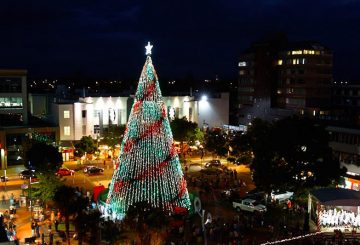뉴질랜드 힙합 그룹 홈 브루 (Home Brew) 가 10여 년 만에 첫 앨범인 ‘런 잇 백 (Run It Back) ‘을 발매했다.이 앨범은 12월 8일에 발매되었는데, 이는 10여 년 전 셀프 타이틀 넘버 원 앨범 이후 밴드가 처음으로 공식 발매한 앨범이다.
그룹 멤버인 톰 스콧이 카라 리커드와 함께 스튜디오에서 새 앨범과 발매 간의 긴 휴식에 대해 이야기를 나눴다.스콧은 앨범을 “아름다운 것”이라고 부르며 앨범에 대한 자부심을 드러냈다.그는 ‘Run It Back’이 그룹의 기원을 재조명하는 동시에 그룹의 성장과 음악에 대한 새로운 관점을 반영한다고 설명했다.
Scott은 그룹이 이제 음악을 만들면 그 음악은 사람들의 것이라는 것을 이해하고 있다고 말했습니다.그는 자존심과 자기 비판에서 벗어나는 것이 중요하다고 강조했습니다.새 앨범에 수록된 가사에는 힘든 시기와 처리 중인 트라우마가 자주 다뤄지는데, 스콧은 이를 작업의 중심 주제라고 말했다.
그는 홈 브루가 언제나 음악을 통해 그들의 트라우마를 처리하는 방법이었다고 설명하며, 블루스에 비유했다.그는 또한 이 앨범이 브레이크업 앨범이라고 밝혔다.스콧이 한때 감정적으로 너무 생생하다고 여겼던 이 그룹의 초기 곡들 중 일부는 팬들이 각자의 방식으로 해석한 후 그에게 새로운 의미를 갖게 되었습니다.
11년간 녹음이 중단된 기간 동안 Home Brew는 다른 프로젝트에도 참여했습니다.스콧은 지금이 홈 브루로 돌아오기에 적절한 시기라고 말했다.그는 지난 몇 년 동안 특정 캐릭터를 구분해서 연기하는 것보다 자신의 모든 측면을 포용하는 것이 더 쉽다는 것을 알게 되었다고 말했습니다.그는 자신의 모든 부분이 될 줄 아는 것 같다고 말하면서 결론을 내렸다. 비록 이 사실을 깨닫는 데 11년이 걸렸지만 말이다.





























































